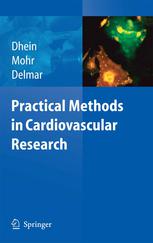

Most ebook files are in PDF format, so you can easily read them using various software such as Foxit Reader or directly on the Google Chrome browser.
Some ebook files are released by publishers in other formats such as .awz, .mobi, .epub, .fb2, etc. You may need to install specific software to read these formats on mobile/PC, such as Calibre.
Please read the tutorial at this link: https://ebookbell.com/faq
We offer FREE conversion to the popular formats you request; however, this may take some time. Therefore, right after payment, please email us, and we will try to provide the service as quickly as possible.
For some exceptional file formats or broken links (if any), please refrain from opening any disputes. Instead, email us first, and we will try to assist within a maximum of 6 hours.
EbookBell Team

4.4
22 reviewsCardiovascular disease is among the most common causes of death in Western industrialized countries. Although a number of diagnostic and therapeutic possibilities exist today, many problems remain unsolved. This implies the urgent need for future cardiovascular research. Practical Methods in Cardiovascular Research gives an overview of a number of available techniques most often used in cardiovascular sciences, expecially for investigators coming from other fields of research.
The emphasis of the book is placed firmly on practical aspects of cardiovascular research. Divided into three sections, the book presents techniques for in vivo, in vitro and molecular level experimentation techniques. Within each chapter, general aspects of cardiovascular research are well presented in addition to detailed descriptions of methods, protocols and practical examples. Written by leading scientists in their field, chapters cover classical methods such as the Langendorff heart or working heart models as well as numerous new techniques and methods. Readers will benefit from the troubleshooting guide in each chapter, and the extensive reference lists for advanced reading.
Practical Methods in Cardiovascular Research is a book that will be welcomed by workers in all fields of cardiovascular science, cardiovascular researchers, cardiologists and physiologists alike as an indispensable laboratory companion.